The Moon, with its mysterious beauty and powerful presence in the night sky, has captured the imagination of civilizations throughout history. From ancient astrology and mythology to religious beliefs and symbolism, the Moon holds a significant place in human culture. In this article, we will explore the power and symbolism of the Moon in ancient beliefs, delving into its roles in astrology, mythology, religion, and its deeper meaning as a symbol. Join us on this captivating journey as we unlock the secrets of the Moon and shed light on its profound impact on human consciousness and spirituality.
Contents
- Astrology and the Moon
- Mythology and the Moon
- Religious Beliefs and the Moon
- Symbolism and Meanings of the Moon
- Conclusion
-
Frequently Asked Questions
- What is the significance of the Moon in astrology?
- How does the Moon’s placement in a birth chart influence personality traits?
- What are the different lunar phases in astrology?
- How do the lunar phases affect human behavior?
- Can astrology predict a person’s emotions based on the Moon’s position?
- What is the relationship between the Moon and intuition?
- How can one harness lunar energies for personal growth?
- Is the Moon’s influence limited to individual personalities?
- Are there any traditions or rituals associated with the Moon in astrology?
- Does astrology recognize the influence of the Moon on romantic relationships?
- References
-
Frequently Asked Questions
- What is the significance of the moon in astrology?
- How do moon phases affect astrology?
- Can the moon influence our personalities?
- Who are some important lunar deities?
- What kind of rituals are associated with moon worship?
- How is the moon depicted in art and literature?
- Why is the moon often associated with femininity?
- What does the moon symbolize in terms of rebirth and transformation?
- How did ancient Egyptians view the moon in their religious beliefs?
- How is the moon revered in Hinduism and Buddhism?
- References
- Read More
Astrology and the Moon
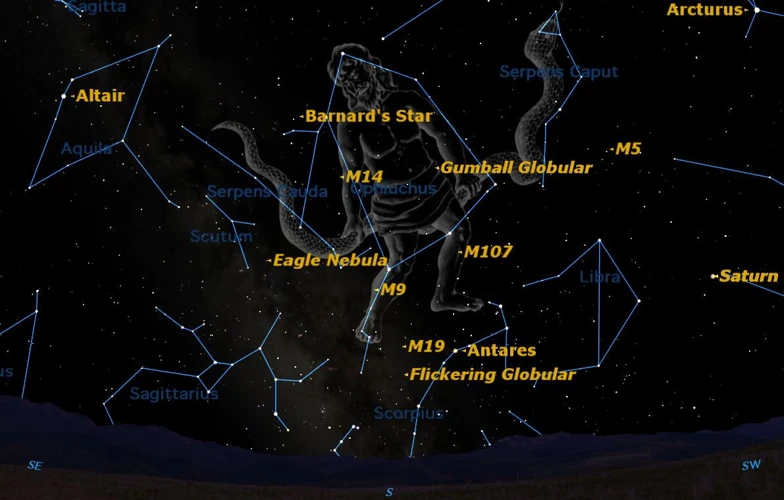
Astrology, the study of celestial bodies and their influence on human affairs, has long recognized the significance of the Moon. As one of the most prominent celestial bodies in our night sky, the Moon has a profound impact on personal characteristics and emotional energies. In astrology, the Moon represents our emotional nature, instincts, and intuition. Its placement in the birth chart reveals valuable insights into an individual’s emotional needs, nurturing tendencies, and subconscious patterns. The Moon’s position in relation to the Sun at the time of birth determines an individual’s Moon sign, which influences their emotional responses and innermost desires. The lunar phases, often linked to the Moon’s impact on human behavior, also play a significant role in astrology. Each phase – New Moon, Waxing Crescent, First Quarter, Waxing Gibbous, Full Moon, Waning Gibbous, Last Quarter, and Waning Crescent – carries its own energetic properties and influences our moods and actions. This connection between the Moon and astrology extends beyond individual personalities and impacts the collective consciousness as well. Understanding the symbolism and interpretation of the Moon in astrology allows us to navigate our emotional landscape and harness the lunar energies for personal growth and transformation.
The Moon as a Celestial Body
The Moon, as a celestial body, holds a unique and captivating place in our universe. It is Earth’s natural satellite, with a diameter of approximately 3,474 kilometers (2,159 miles), making it the fifth-largest moon in the solar system. Its gravitational influence on Earth creates the tides, shaping our coastlines and affecting marine life. The Moon orbits around the Earth in a synchronized rotation, which is why we always see the same side of the Moon facing us. This phenomenon, known as tidal locking, adds to its enigmatic allure. The Moon’s surface is covered in impact craters, caused by collisions with asteroids and meteoroids over billions of years. Additionally, it is adorned with plains known as maria, which are large dark areas formed by ancient volcanic activity. The Moon’s phases, which occur as a result of its position relative to the Sun and Earth, are an awe-inspiring sight to behold. From the New Moon, where the Moon is not visible, to the Full Moon, where its illuminated surface shines brightly, each phase represents a unique stage in the lunar cycle. The Moon’s physical and cyclic characteristics have fascinated humans for centuries, giving rise to countless myths, rituals, and interpretations throughout history. Understanding the Moon as a celestial body allows us to appreciate its extraordinary nature and appreciate its impact on our planet and our lives.
Moon Phases and Astrological Interpretations
Moon phases have long been associated with distinct astrological interpretations, each carrying its own energy and significance. The New Moon, for example, marks the beginning of a new lunar cycle and symbolizes fresh starts and new beginnings. It is a time of intention setting, planting seeds, and initiating new projects or ventures. The Waxing Crescent phase follows, representing growth, expansion, and the building of momentum. This is a time for taking action, making progress, and nurturing the initial plans set during the New Moon. The First Quarter Moon signifies a pivotal point in the lunar cycle, where challenges and obstacles may arise. It calls for adaptability, decision-making, and finding balance between opposing forces. As the Moon moves into the Waxing Gibbous phase, the energy intensifies, and focus shifts towards refinement, preparation, and fine-tuning. The Full Moon, perhaps the most widely recognized phase, represents illumination, culmination, and the height of emotional intensity. It is a time of heightened emotions, release, and transformation. The Waning Gibbous phase that follows invites reflection, introspection, and the shedding of old patterns or beliefs that no longer serve us. The Last Quarter Moon signifies a time of release, surrender, and closure. It encourages us to let go and make space for new opportunities and growth. Finally, the Waning Crescent phase represents rest, reflection, and preparation for another lunar cycle. Understanding the astrological interpretations of each Moon phase allows us to align ourselves with the natural rhythms of life and harness the energies available to us for personal and spiritual growth. Whether we seek to set intentions, make decisions, release, or reflect, the Moon phases guide us along our journey of self-discovery and transformation. For more information on astrological influences and interpretations, you can check out this guide on understanding the hidden qualities of Ophiuchus.
The Influence of the Moon on Personalities and Behavior
The Moon’s influence on personalities and behavior is an intriguing aspect of astrology. As the ruler of emotions and intuition, the Moon’s placement in an individual’s birth chart can provide valuable insights into their emotional tendencies and reactions. Those with a strong lunar influence are often sensitive, empathetic, and attuned to their inner world. Their emotions ebb and flow like the tides, impacting their moods and reactions. The Moon’s position in specific zodiac signs adds another layer of depth to its influence. For example, individuals with a Moon in fiery Aries may display passionate and impulsive emotions, while those with a Moon in practical Taurus tend to be stable and grounded in their feelings. The Moon’s aspects to other planets in the birth chart also shape an individual’s emotional landscape. Harmonious aspects can bring emotional stability and empathy, while challenging aspects may lead to emotional volatility or intensity. Understanding the influence of the Moon on personalities and behavior allows individuals to embrace their emotional nature and work with its energies for personal growth and self-awareness.
Mythology and the Moon
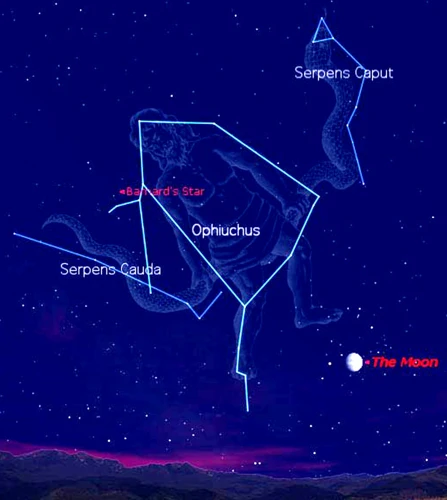
Mythology is replete with captivating stories that reveal the profound significance of the Moon. Across cultures and civilizations, the Moon is often personified as a deity with immense power and influence. In Greek mythology, the Moon is associated with the goddess Selene, who rides her chariot across the sky each night. Selene is linked to the phases of the Moon, with her love affair with the mortal Endymion capturing the eternal bond between the Moon and the Earth. In Norse mythology, the Moon is personified as Mani, the brother of the Sun goddess Sol. Mani is said to travel across the night sky, chased by the wolves Hati and Skoll, who seek to devour him and plunge the world into darkness. Chinese mythology offers the tale of Chang’e, the Moon goddess who was called to the heavens and now resides on the Moon accompanied by her companion, the Jade Rabbit. These mythological stories highlight the reverence and awe ancient cultures held for the enigmatic Moon, perceiving it as a divine force guiding the tides of emotions and illuminating our nights with its gentle glow. Through these tales, the Moon becomes a symbol of mystery, romance, and the eternal cycles of life and death.
Lunar Deities and their Stories
In ancient mythology, various cultures around the world revered the Moon and personified its celestial presence through the worship of lunar deities. These deities often symbolized femininity, fertility, and protection. One of the most well-known lunar deities is Luna, the Roman goddess of the Moon. Luna was believed to ride her silver moon chariot across the night sky, bringing light and guiding sailors during their voyages. In Greek mythology, the Moon was personified as the goddess Selene, who fell in love with the mortal Endymion and visited him each night while he slept, leaving him in eternal slumber. Another prominent lunar deity is Chang’e, from Chinese mythology, who resided on the Moon after consuming the elixir of immortality. In Hindu mythology, the Moon is associated with the deity Chandra, representing tranquility and divine beauty. These stories and myths surrounding lunar deities highlight the universal fascination with the Moon and its profound influence on human imagination and spirituality. By exploring the tales of these deities, we gain insight into the diverse cultures and beliefs that cherished the Moon as a symbol of power, illumination, and mystical energy.
Moon Worship and Rituals
Moon worship and rituals have been a significant part of various cultures and religions throughout history. The Moon’s mesmerizing beauty and its association with natural cycles have inspired awe and reverence in many societies. In ancient civilizations, people observed the Moon’s phases and believed that its transformations held symbolic meanings. These beliefs led to the development of rituals and ceremonies centered around the Moon. Many cultures conducted lunar rituals during specific lunar phases, such as the Full Moon or New Moon, to harness the Moon’s powerful energies. These rituals often included offerings, prayers, dances, and meditations to honor and connect with the lunar deity or the divine feminine associated with the Moon. In some cultures, Moon worship was intertwined with fertility rites, as the Moon’s cycles were seen as mirroring the cycles of nature and human life. For example, in ancient Mesopotamia, the Moon god Nanna was worshipped for his role in fertility and abundance. In modern-day Pagan and Wiccan traditions, Moon rituals are still practiced, where individuals come together to celebrate the Moon’s energy, set intentions, and perform spells and divination during specific lunar phases. The Moon’s influence on tides and the Earth’s natural rhythms further strengthens the connection between Moon worship and the cycles of life. Moon worship and rituals provide a sacred space for individuals to honor the Moon, tap into its energies, and align themselves with the larger cosmic forces that govern the universe.
The Moon in Creation Myths
The Moon holds a central role in many creation myths across different cultures. In these myths, the Moon is often associated with the creation and order of the universe. In some Native American creation stories, it is believed that the Moon was created to be a companion to the Sun, representing the balance between light and darkness. In Chinese mythology, the Moon is linked to the story of Chang’e, the immortal goddess of the Moon who resides there with her companion, the Jade Rabbit. According to the ancient Greek myth, Selene is the goddess of the Moon, who falls in love with the mortal shepherd Endymion. The Moon is seen as a symbol of eternal love and desire in this myth. In Hindu mythology, the Moon is personified as the deity Chandra, who is responsible for the cycle of creation and destruction. These creation myths highlight the Moon’s profound role in the origin and harmony of the world, weaving it into the rich tapestry of cultural beliefs and traditions. Exploring these myths allows us to appreciate the significance and symbolism of the Moon as a divine and celestial force in the human imagination.
Religious Beliefs and the Moon
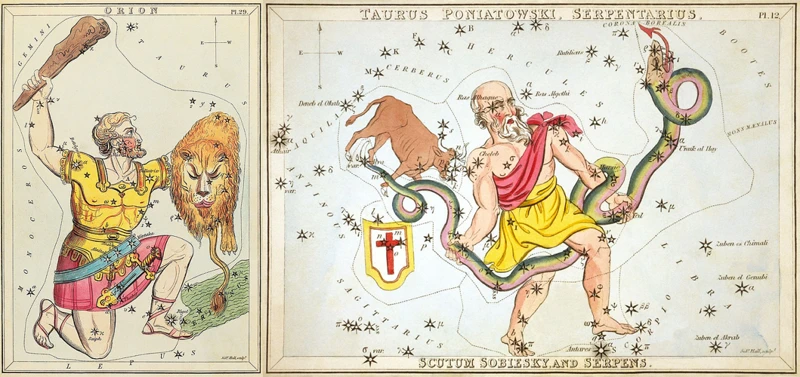
Religious beliefs have attributed significant symbolism and reverence to the Moon. In various pagan religions, the Moon was often considered a deity or a powerful celestial entity deserving of worship. It represented femininity, fertility, and the ebb and flow of life. Many pagans held rituals and ceremonies during specific lunar phases, such as the Full Moon, to honor and connect with the lunar energy. Ancient Egyptian religion also revered the Moon, associating it with the god Thoth, who was regarded as the god of wisdom and knowledge. The Egyptians believed that Thoth regulated the lunar cycles and used the Moon as a celestial timekeeper. In Hinduism and Buddhism, the Moon holds symbolic significance as well. In Hindu mythology, the Moon is associated with the god Chandra, representing peace and tranquility. It is also linked to the concept of the eternal soul and its cycles of birth and rebirth. In Buddhism, the Moon symbolizes enlightenment and is often depicted alongside the Sun, representing the union of wisdom and compassion. The religious beliefs surrounding the Moon vary across cultures and traditions, but they all acknowledge its divine power and incorporate it into their spiritual practices.
The Moon in Pagan Religions
In pagan religions, the Moon holds great significance and is often revered as a deity or a symbol of divine feminine energy. Many pagan traditions, such as Wicca and Druidry, worship the Moon as a sacred entity and incorporate lunar rituals into their practices. The Moon’s cycles and phases play a central role in these religions, as they emphasize the ebb and flow of energy and the cyclical nature of life. The New Moon represents new beginnings and setting intentions, while the Full Moon symbolizes heightened energy and the culmination of efforts. Pagan rituals often align with specific lunar phases, harnessing the unique energies associated with them. The Moon’s association with femininity is also profound in pagan beliefs. It is seen as a symbol of the Goddess, representing fertility, intuition, and the nurturing aspects of life. The Moon’s gentle and mysterious nature is celebrated and revered, connecting practitioners to the divine feminine within themselves and the world around them. This reverence for the Moon in pagan religions stems from its association with the natural world and the cycles of life, reminding followers of their connection to the Earth and the greater cosmic forces that govern existence.
The Moon in Ancient Egyptian Religion
In Ancient Egyptian religion, the Moon held a significant place of worship and reverence. Known as “Iah” or “Khonsu,” the Moon was considered a powerful deity associated with fertility, timekeeping, and healing. The Ancient Egyptians believed that the Moon was born of the sky goddess Nut and the air god Geb, making it a celestial symbol of creation and the cycle of life. The Moon was often depicted as a god with a crescent-shaped headdress, emphasizing its lunar connection. The Egyptians believed that the Moon had the power to regulate the tides and influence the growth of crops, thus playing a pivotal role in agriculture and the prosperity of the land. The Moon was closely associated with the goddess Isis, who was considered the protector of the family and the divine mother. The Moon’s association with Isis added to its significance as a symbol of nurturing and maternal energy. The ancient Egyptians celebrated the Moon with festivals and rituals, offering prayers for blessings, fertility, and protection. The Moon’s cyclical nature and its connection to timekeeping also made it an essential component in the development of the Egyptian calendar. Its phases were carefully observed and recorded to determine the timing of religious ceremonies and important agricultural events. The belief in the Moon’s power and its association with various deities demonstrates the deep spiritual connection that the Ancient Egyptians had with this celestial body. Today, we can still see remnants of their worship in the ancient temples and artifacts that beautifully depict the significance of the Moon in their religious beliefs and practices.
The Moon in Hinduism and Buddhism
In Hinduism and Buddhism, the Moon holds significant symbolism and spiritual meaning. In Hindu mythology, the Moon is personified as the deity Chandra, who is often depicted as a young and handsome god riding a chariot drawn by ten white horses. Chandra is associated with rejuvenation, fertility, and intuition. In Hindu astrology, the Moon is considered one of the most prominent celestial bodies and is believed to influence human emotions and mental faculties. The waxing and waning of the Moon are also linked to the cycle of life and death. In Buddhism, the Moon is revered as a symbol of enlightenment and spiritual awakening. The story of the Buddha’s enlightenment, often depicted under the Bodhi tree, is said to have taken place during a full moon night. The Moon’s serene and radiant presence serves as a reminder of the calmness and clarity that can be attained through meditation and the pursuit of spiritual wisdom. In both Hinduism and Buddhism, the Moon represents the yin or feminine energy, complementing the yang or masculine energy of the Sun. This balance of lunar and solar energies reflects the harmony and interdependence of the universe. The Moon’s symbolism in these spiritual traditions invites practitioners to connect with their inner selves, seek enlightenment, and embrace the cyclical nature of existence.
Symbolism and Meanings of the Moon

The Moon holds deep symbolism and profound meanings in various cultures and artistic expressions. In art and literature, it often represents tranquility, beauty, and mystery. Artists have captured the Moon’s ethereal glow and gentle radiance, using it as a symbol of inspiration and creativity. The Moon’s ever-changing phases have been compared to the cycles of life, representing birth, growth, decay, and rebirth. Its waxing and waning also symbolize the ebb and flow of emotions and the cyclical nature of time. Additionally, the Moon is often associated with femininity and the divine feminine energy. Its soft illumination and connection to the tides have linked it to the ebb and flow of the feminine energy within individuals and societies. In spiritual and esoteric traditions, the Moon is regarded as a symbol of intuition, psychic abilities, and the connection to the unconscious mind. Its symbolism extends to themes of introspection, introspective reflection, and the exploration of one’s deeper self. The Moon’s symbolic significance is multi-faceted, encompassing themes of beauty, cyclicality, femininity, intuition, and spiritual exploration. Its captivating presence continues to inspire and mystify individuals across the globe.
Symbolism of the Moon in Art and Literature
Symbolism of the Moon in art and literature has been prevalent throughout history, with the Moon often representing a variety of deep and profound meanings. In art, the Moon is commonly portrayed as a source of soft and mystical light, casting an ethereal glow on landscapes and figures. It is frequently associated with notions of tranquility, introspection, and romanticism. The Moon’s ever-changing phases, from the darkness of the New Moon to the full brilliance of the Full Moon, have captivated artists and writers alike. Its cycle has been seen as a reflection of the cycles of life, representing birth, death, and rebirth. In literature, the Moon frequently serves as a symbol of the subconscious mind, the realm of dreams, and the unknown. It is often used to depict the mysterious and hidden aspects of human nature. Additionally, the Moon is sometimes associated with femininity, fertility, and the goddess archetype. This association stems from its connection to the menstrual cycle and the symbolism of cycles and nurturing. Artists and writers have used the Moon as a metaphor to evoke emotions, set atmospheric tones, and convey powerful themes and messages. Whether portraying a romantic night illuminated by moonlight or delving into the depths of the human psyche, the Moon’s symbolism in art and literature is vast and rich, offering endless possibilities for interpretation and exploration.
The Moon as a Feminine Symbol
In various ancient beliefs and cultures, the Moon is often associated with femininity and the divine feminine energy. The soft glow and cyclical nature of the Moon have been linked to the ebb and flow of the female reproductive cycle, giving rise to its symbolism as a feminine force. In mythology, goddesses such as Artemis, Selene, and Luna were revered as lunar deities, representing the feminine aspects of creation, intuition, and wisdom. Additionally, the Moon’s connection to the tides, which are influenced by the gravitational pull of the Moon, further emphasizes its association with the feminine cycles of birth, creation, and nurturing. The Moon is seen as a source of nurturing and emotional guidance, much like a mother’s love. Its tranquil light can also be seen as a reflection of the gentle and compassionate qualities often associated with femininity. The Moon’s feminine symbolism extends beyond mythology and permeates various aspects of human culture, including art, literature, and spiritual practices. Its symbol is often used to represent female deities, fertility, and the mysterious and alluring aspects of womanhood. The Moon as a feminine symbol serves as a reminder of the power and beauty found within the feminine aspects of the universe and within each individual. Embracing and honoring the Moon’s feminine energy can help individuals connect with their own intuition, emotions, and nurturing qualities, fostering a deeper sense of self-awareness and balance.
The Moon as a Symbol of Rebirth and Transformation
The Moon has long been regarded as a powerful symbol of rebirth and transformation. This symbolism is rooted in the natural cycles of the lunar phases, which mirror the cycles of life and death. Just as the Moon waxes and wanes, so too do our experiences and emotions ebb and flow. The Full Moon represents a time of illumination and culmination, where we are encouraged to release what no longer serves us and embrace new beginnings. This symbolism of rebirth and transformation is also evident in ancient mythologies and religious beliefs. In many cultures, the Moon is associated with goddesses such as Artemis, Selene, and Luna, who are often depicted as symbols of femininity, intuition, and regeneration. The Moon’s association with water further reinforces its transformative qualities, as water symbolizes emotions and the fluidity of life. The Moon’s energy can be harnessed for personal growth and spiritual development by embracing its symbolism of rebirth and transformation. By surrendering to the cycles of life, we can let go of the old and welcome the new, just as the Moon does each month. In essence, the Moon serves as a reminder that change is inevitable and that through embracing transformation, we can experience personal renewal and growth.
Conclusion
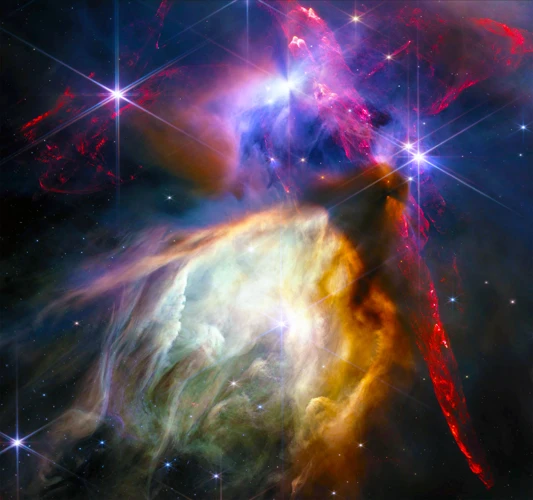
In conclusion, the Moon holds immense power and symbolism in ancient beliefs. From its significance in astrology, where it influences our emotions and instincts, to its role in mythology and religious practices, the Moon has captured the imagination of humanity for centuries. In astrology, the Moon’s placement in the birth chart reveals deep insights into our emotional nature and subconscious patterns. Its lunar phases also play a significant role in shaping our moods and actions. Mythology and religion have attributed divine qualities to the Moon, with lunar deities and worship rituals being prominent in many ancient cultures. The Moon symbolizes femininity, rebirth, and transformation, inspiring artists and writers throughout history. Its ethereal beauty and mysterious aura continue to captivate us to this day. As we contemplate the power and symbolism of the Moon, we gain a deeper understanding of our connection to the cosmos and the profound influence it has on our lives. Explore more about the celestial wonders and their impact on astrology by delving into the compatibility between Ophiuchus signs and career paths.
Frequently Asked Questions
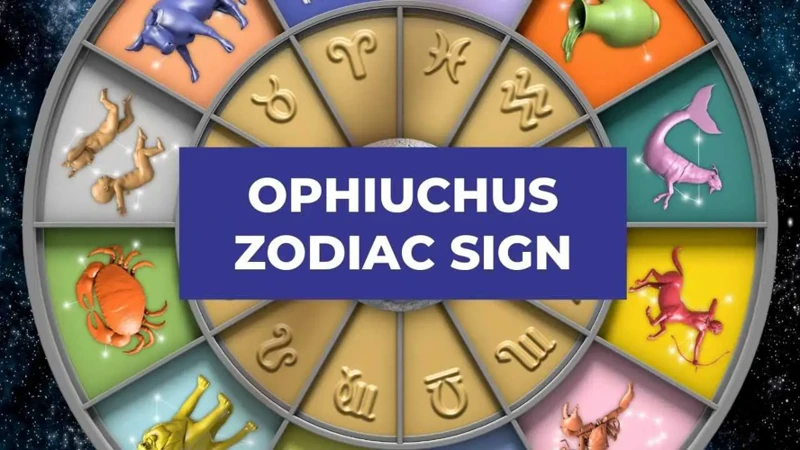
What is the significance of the Moon in astrology?
The Moon holds great significance in astrology as it represents our emotional nature, instincts, and intuition. It unveils deep insights into our emotional needs, nurturing tendencies, and subconscious patterns.
How does the Moon’s placement in a birth chart influence personality traits?
The Moon’s placement in a birth chart determines an individual’s Moon sign, which influences their emotional responses and innermost desires. It plays a crucial role in shaping personality traits related to emotions, empathy, and nurturing tendencies.
What are the different lunar phases in astrology?
The lunar phases in astrology include the New Moon, Waxing Crescent, First Quarter, Waxing Gibbous, Full Moon, Waning Gibbous, Last Quarter, and Waning Crescent. Each phase carries its own energetic properties and influences our moods and actions.
How do the lunar phases affect human behavior?
The different lunar phases are believed to have an impact on human behavior. For example, the Full Moon is associated with heightened emotions and increased energy, while the New Moon symbolizes fresh beginnings and introspection.
Can astrology predict a person’s emotions based on the Moon’s position?
Astrology provides insights into a person’s emotional tendencies by analyzing the Moon’s position in their birth chart. While it cannot predict specific emotions, it can offer valuable information about emotional patterns and needs.
What is the relationship between the Moon and intuition?
The Moon is closely linked to intuition in astrology. Its influence on emotions and instincts enhances our intuitive abilities, making us more receptive to subtle energies and inner guidance.
How can one harness lunar energies for personal growth?
By understanding the symbolism and interpretation of the Moon in astrology, individuals can align themselves with lunar energies for personal growth. This can be done through practices such as meditation, journaling, and ritual work focused on specific lunar phases.
Is the Moon’s influence limited to individual personalities?
No, the Moon’s influence extends beyond individual personalities and impacts the collective consciousness as well. Lunar energies can influence societal trends, group dynamics, and even global events.
Are there any traditions or rituals associated with the Moon in astrology?
Yes, various traditions and rituals revolve around the Moon in astrology. These may include performing ceremonies or setting intentions during specific lunar phases, conducting Moon meditations, or incorporating lunar worship into spiritual practices.
Does astrology recognize the influence of the Moon on romantic relationships?
Astrology acknowledges the Moon’s influence on romantic relationships. It signifies emotional compatibility, nurturing dynamics, and the ability to meet each other’s emotional needs, all of which contribute to the overall harmony of a relationship.
References
- Moon Symbol: Meaning & Significance in World Cultures
- Moon symbolism, folklore and mythology
- Ancient Beliefs About the Moon – Powers of the Moon Series
Frequently Asked Questions

What is the significance of the moon in astrology?
The moon is a key element in astrology as it represents emotions, intuition, and the subconscious mind. It is believed to influence our moods and behaviors.
How do moon phases affect astrology?
Moon phases are important in astrology as they are thought to amplify or diminish the energetic qualities of each zodiac sign. Each phase brings different influences and energies.
Can the moon influence our personalities?
According to astrological beliefs, the moon’s position at the time of our birth can contribute to shaping our personalities and preferences.
Who are some important lunar deities?
Lunar deities vary across cultures, but some well-known examples include Artemis in Greek mythology, Selene in Roman mythology, and Chang’e in Chinese mythology.
What kind of rituals are associated with moon worship?
Moon worship rituals can vary widely, but they often involve offering prayers, making offerings, and performing ceremonial dances or chants to honor the moon’s power and influence.
How is the moon depicted in art and literature?
The moon is often portrayed as a symbol of mystery, beauty, and inspiration in art and literature. It can represent various emotions, such as longing, romance, or melancholy.
Why is the moon often associated with femininity?
The moon’s connection to femininity stems from its cyclical nature, mirroring the menstrual cycle and the concept of fertility. It is often seen as a nurturing and reflective symbol.
What does the moon symbolize in terms of rebirth and transformation?
The moon is often associated with the cyclical nature of life, death, and rebirth. It symbolizes the potential for growth, change, and transformation in both a physical and spiritual sense.
How did ancient Egyptians view the moon in their religious beliefs?
The ancient Egyptians considered the moon as a divine entity associated with the god Thoth and believed it played a central role in the calculation of time and agricultural cycles.
How is the moon revered in Hinduism and Buddhism?
In Hinduism, the moon is associated with the deity Chandra and represents the mind, emotions, and consciousness. In Buddhism, the moon symbolizes enlightenment and transcendent wisdom.
References
- The Moon in Ancient Egypt
- What were some ancient beliefs about the moon?
- Moon: What Was Its Role In Beliefs Of Ancient People?






